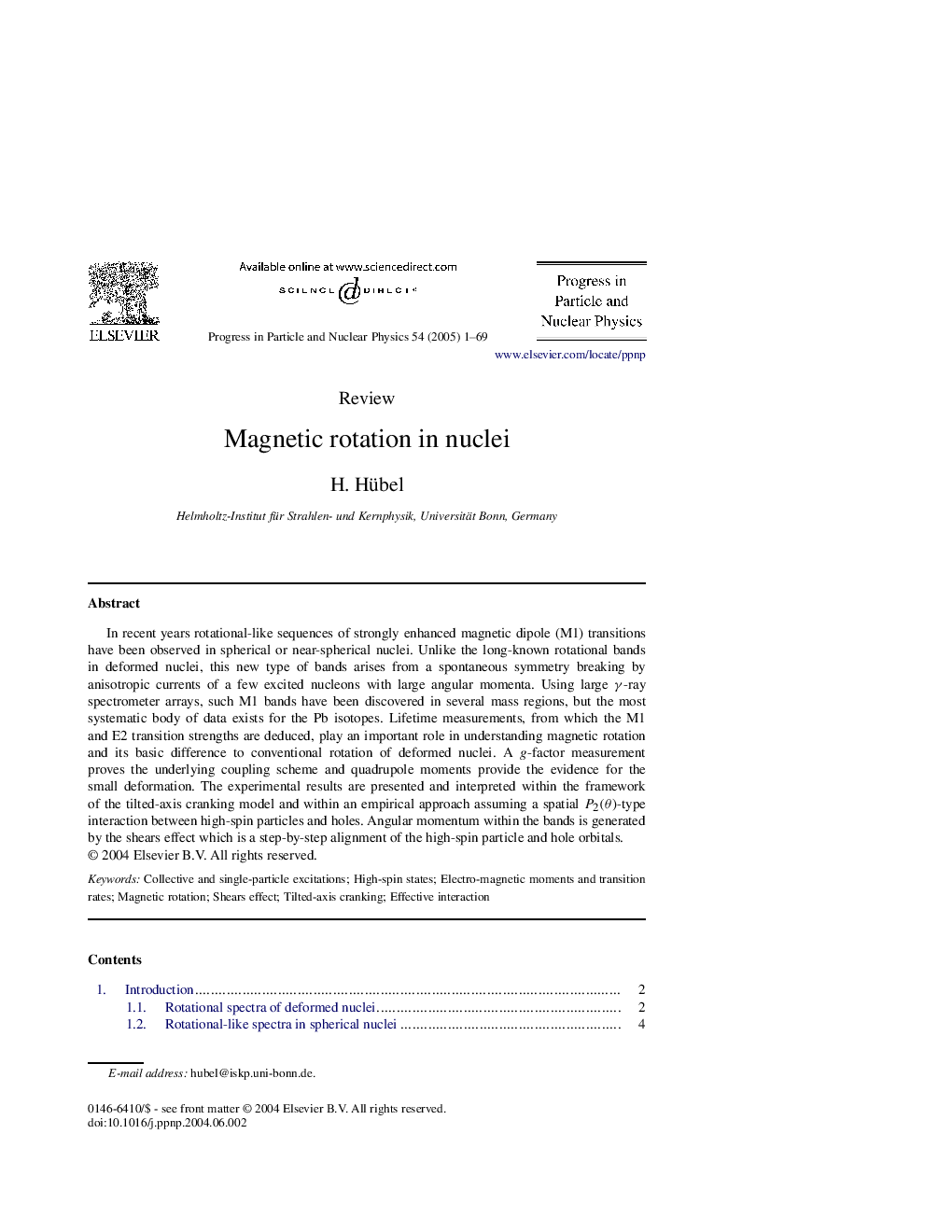| کد مقاله | کد نشریه | سال انتشار | مقاله انگلیسی | نسخه تمام متن |
|---|---|---|---|---|
| 10726337 | 1035880 | 2005 | 69 صفحه PDF | دانلود رایگان |
عنوان انگلیسی مقاله ISI
Magnetic rotation in nuclei
دانلود مقاله + سفارش ترجمه
دانلود مقاله ISI انگلیسی
رایگان برای ایرانیان
کلمات کلیدی
موضوعات مرتبط
مهندسی و علوم پایه
فیزیک و نجوم
فیزیک هسته ای و انرژی بالا
پیش نمایش صفحه اول مقاله

چکیده انگلیسی
In recent years rotational-like sequences of strongly enhanced magnetic dipole (M1) transitions have been observed in spherical or near-spherical nuclei. Unlike the long-known rotational bands in deformed nuclei, this new type of bands arises from a spontaneous symmetry breaking by anisotropic currents of a few excited nucleons with large angular momenta. Using large γ-ray spectrometer arrays, such M1 bands have been discovered in several mass regions, but the most systematic body of data exists for the Pb isotopes. Lifetime measurements, from which the M1 and E2 transition strengths are deduced, play an important role in understanding magnetic rotation and its basic difference to conventional rotation of deformed nuclei. A g-factor measurement proves the underlying coupling scheme and quadrupole moments provide the evidence for the small deformation. The experimental results are presented and interpreted within the framework of the tilted-axis cranking model and within an empirical approach assuming a spatial P2(θ)-type interaction between high-spin particles and holes. Angular momentum within the bands is generated by the shears effect which is a step-by-step alignment of the high-spin particle and hole orbitals.
ناشر
Database: Elsevier - ScienceDirect (ساینس دایرکت)
Journal: Progress in Particle and Nuclear Physics - Volume 54, Issue 1, March 2005, Pages 1-69
Journal: Progress in Particle and Nuclear Physics - Volume 54, Issue 1, March 2005, Pages 1-69
نویسندگان
H. Hübel,